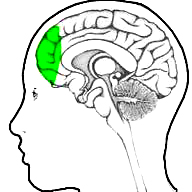 Starting in 1991, Dr. Jay Giedd, chief of brain imaging at the Child Psychiatry Branch of the National Institute of Mental Health, starting taking pictures of children’s brains over a period of nine years, using magnetic resonance imaging (MRI). He and his colleagues studied some 1,000 healthy kids (including two of his own) at intervals ranging from two weeks to four years.
Starting in 1991, Dr. Jay Giedd, chief of brain imaging at the Child Psychiatry Branch of the National Institute of Mental Health, starting taking pictures of children’s brains over a period of nine years, using magnetic resonance imaging (MRI). He and his colleagues studied some 1,000 healthy kids (including two of his own) at intervals ranging from two weeks to four years.
Contrary to previous thinking that the brain is mostly fully formed by the end of childhood, Giedd’s research showed substantial growth taking place throughout the teen years and into the twenties. This growth takes place in the corpus callosum, a brain structure that is essentially a set of nerves that connects various parts of the brain and is critical for intelligence, consciousness and self-awareness.
They also discovered that the prefrontal cortex (PFC) of the brain – the part of our brain where decision making, strategy forming, impulse control, and priority setting are controlled – does most of its maturation between the ages of 12 and 20.
It makes sense, then, that the adolescent will move rapidly back and forth between rational and responsible “adult” behavior to more impulsive, poorly-thought-out “adolescent” behavior.
If we take note that our teenagers’ capacity to put situations in context and to anticipate future consequences is still in formation, we can react with greater patience and with less sense of being personally attacked . At the same time, it is a reminder that adolescents, alongside their need for greater independence and self-sufficiency, still greatly need the guidance of caring adults.